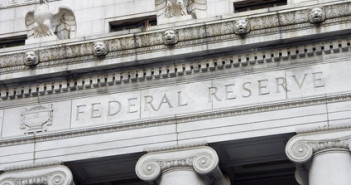While two non-voting Federal Reserve Presidents did their best to try and calm investor’s nerves, the jawboning from Dallas’s Richard Fisher and Minneapolis’ Narayana Kocherlakota was unable to keep the S&P out of double-digit losses yesterday.
Although considered an ‘uber-hawk’ when it comes to monetary policy for the United States, Fisher made sure to distinguish tapering from tightening, and reiterated that an exit from accommodative policy actions is not appropriate just yet.
Kocherlakota echoed support for the continuation of expansionary monetary policy even after the end of quantitative easing, also adding that there was a “mis-perception in markets that the Fed has turned more hawkish.â€Â The S&P was able to move off the lows of the day, but still ended well into negative territory to finish the session.
The sentiment from ‘Meltdown Monday’ carried over into the beginning of the Asian session, where China saw another rocky start to the trading day with the Shanghai Composite down over 5% at one point. The bleeding was then cauterized and Chinese equities caught a bid on rumors that the country’s central bank was going to be holding press conference after markets closed, with many hoping the People’s Bank of China (PBoC) would address liquidity concerns. Unfortunately, for those hoping for a  fresh stimulus injection from the PBoC, the central bank’s official stated that current liquidity was ample, and that the seasonal factors affecting liquidity conditions would gradually disappear. The comforting factor for markets was the bank’s pledge to manage liquidity in the financial sector in a flexible manner, so despite the PBoC not announcing anything in the way of new monetary policy measures, the Shanghai Composite managed to finish just down 0.2%, a stunning comeback compared to the earlier price action.
The optimistic sentiment engulfing global markets has lifted equities in Europe, picking up steam on comments from outgoing Bank of England (BoE) governor Mervyn King to the Treasury Committee that there was no chance of interest rates returning to normal levels anytime soon, as the global economic environment has not yet returned to normal market conditions. The Stoxx, FTSE, and Dax are all in the green as we head into the North American cross, and well the Pound and Euro had both been gaining against the big dollar as risk appetite returns to favour and some of the froth comes off the latest USD rally, the durable goods numbers have seen the USD fight its way back. After making a run into the mid-1.55s, selling pressure after the US economic data sent GBPUSD lower, while EURUSD was also unable to best initial resistance in the mid-1.31s, before turning lower as well.
Turning our attention to North America, Durable Goods orders in the United States for the month of May were released. Expectations were for the headline reading to come in with a 3.0% from the previous month, but after stripping out transportation items, the core reading was forecast to come in flat from April. The actual reading showed big ticket items increased by 3.6% over the month of May, driven mainly by demand for commercial jets and military equipment, with the core print hitting 0.7%. The proxy for future business investment, orders for non-defense capital goods (ex-aircraft), came in with a 1.1% increase after a similar 1.2% increase in the prior month, signaling that business confidence could be stabilizing. The better-than-expected economic data has helped US equity futures continue to gain after their overnight levitation, with their performance indicating that equities will be able to erase a good portion of yesterday’s losses when trading gets underway.
The Loonie was stronger against the USD during the overnight session, but as we creep up to opening bell in North America, USDCAD is reversing earlier losses to trade essentially unchanged from yesterday’s close. The DXY (Dollar Index) is stronger on the positive economic data out of the US, spiking higher to trade above 82.50. Hydrocarbons have also been gaining ground so far this morning, as WTI puts in work above $95.50/barrel. Metals are also managing to find some willing buyers, as Gold works its way to just under $1,290/ounce.
We still have a few more important economic releases yet to come today, with CB Consumer Confidence and New Home Sales south of the 49th parallel both being released at 10:00am EST. New home sales are expected to build on the gains seen in April, with economists forecasting an annualized reading of 462k new single-family homes being sold in May. Consumer Confidence as surveyed by the Conference Board is not expected to reiterate the positive sentiment in new home sales, and while still forecast to come in strong at 75.6, that would be lower than the 76.2 recorded in May.
Update: Both figures exceeded expectations.
With last week’s reaction to the Fed telegraphing how the tapering process might take form, expectations of an exodus from QE could push the market back to a regime whereby good economic news is good for markets and bad economic data is subsequently bad for risk appetite. This could help insulate the Canadian dollar from the sharp losses experienced by other high-beta, growth related currencies, as the buy “North America†sentiment lifts both the big dollar and Canuck buck; to some extent we’ve seen this play out already, as currencies like the Brazilian Real and Australian Dollar are both down 11% since the beginning of May, while the CAD is only down 4%.
Opinion:Â Good opportunity to sell commodity-related currencies against USD



